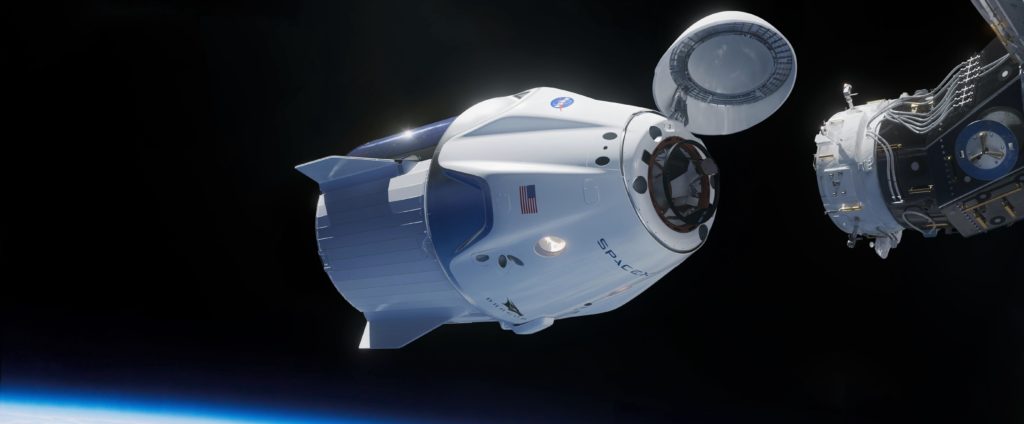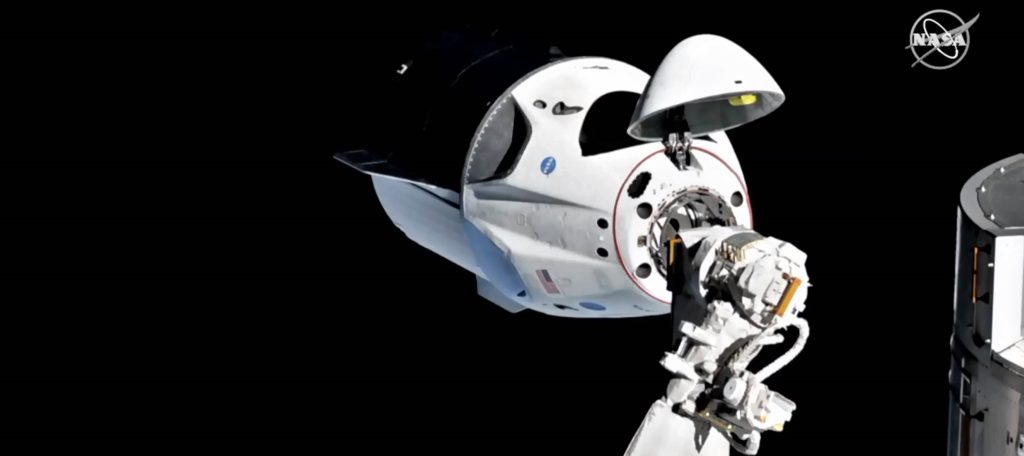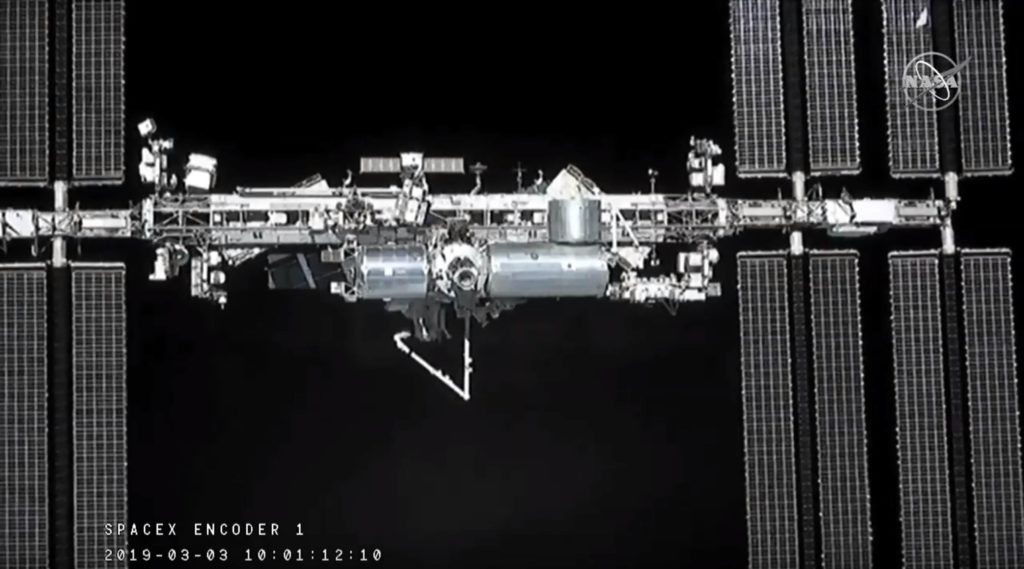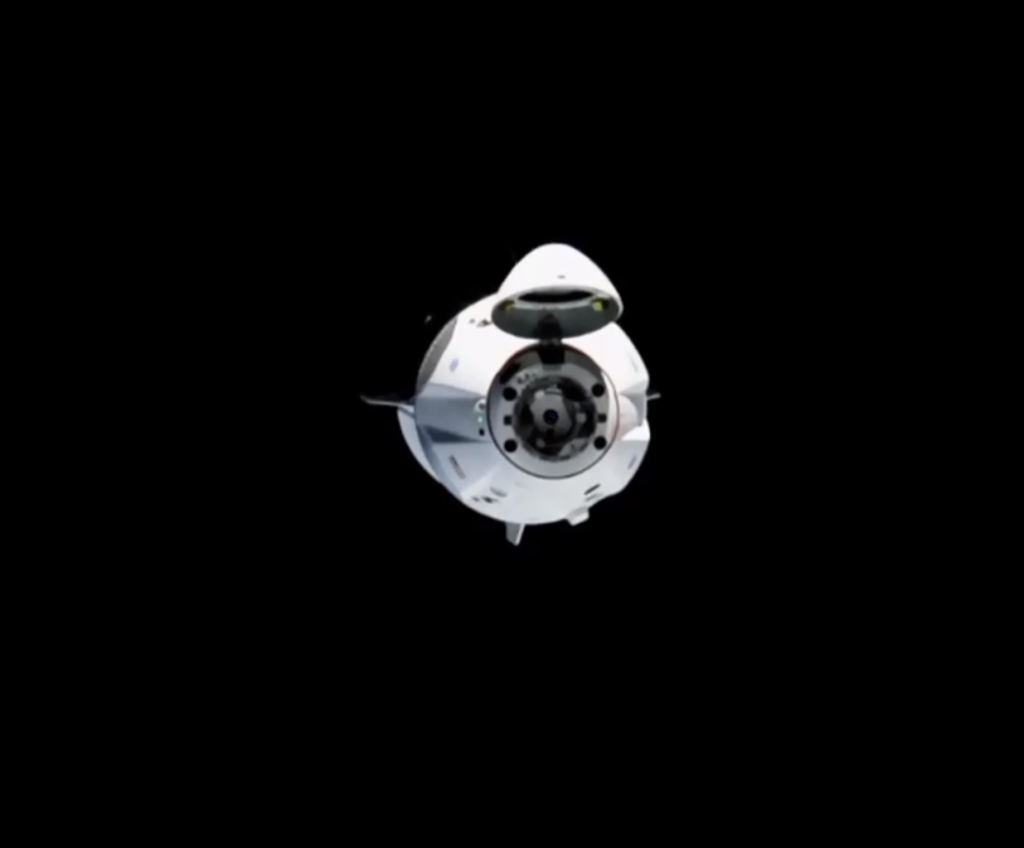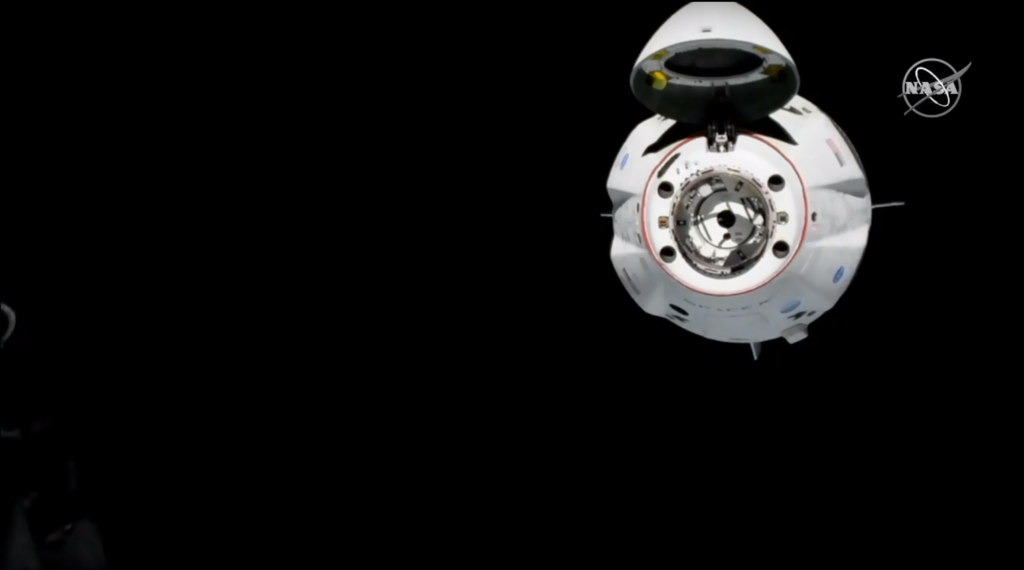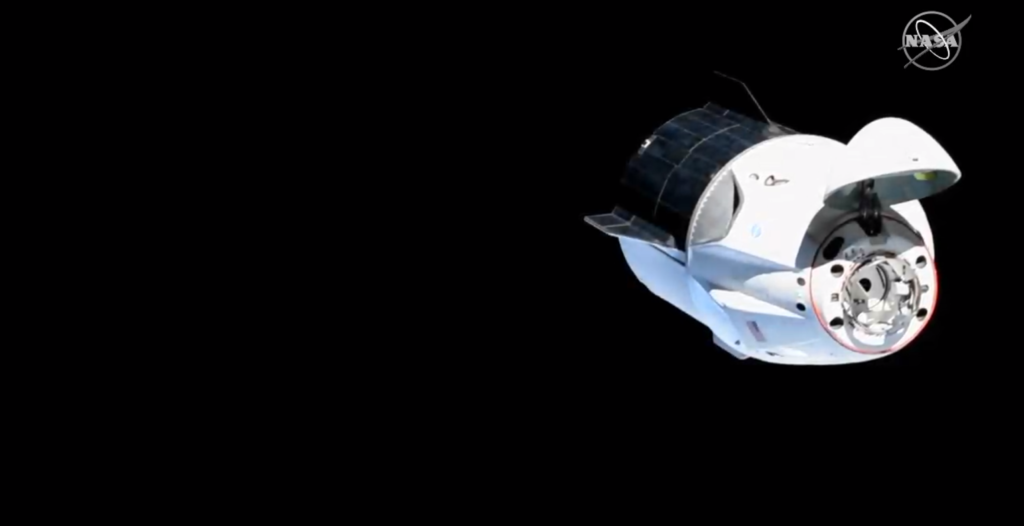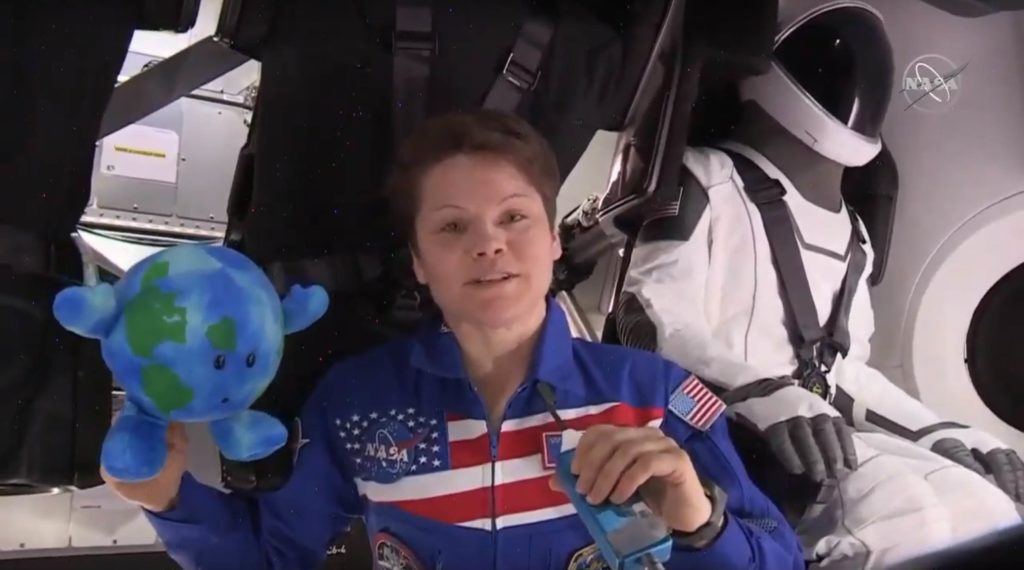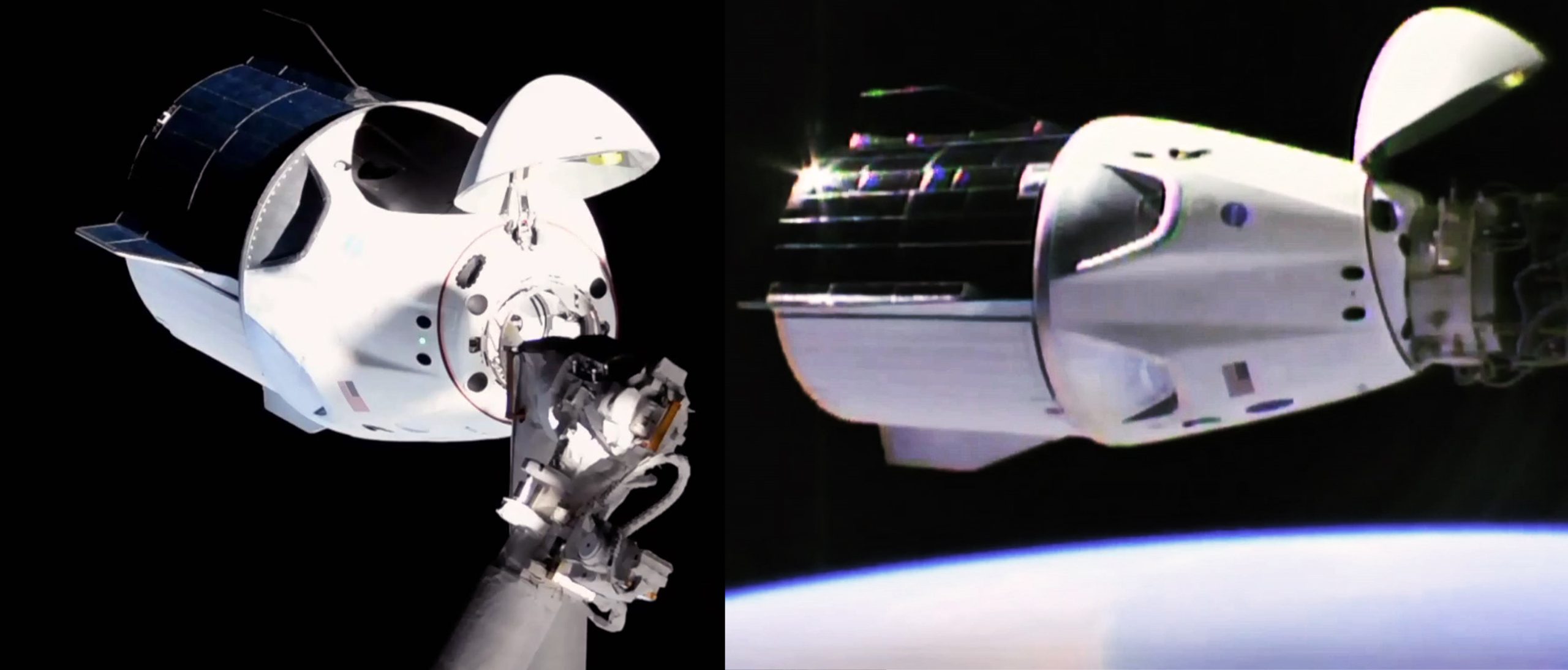
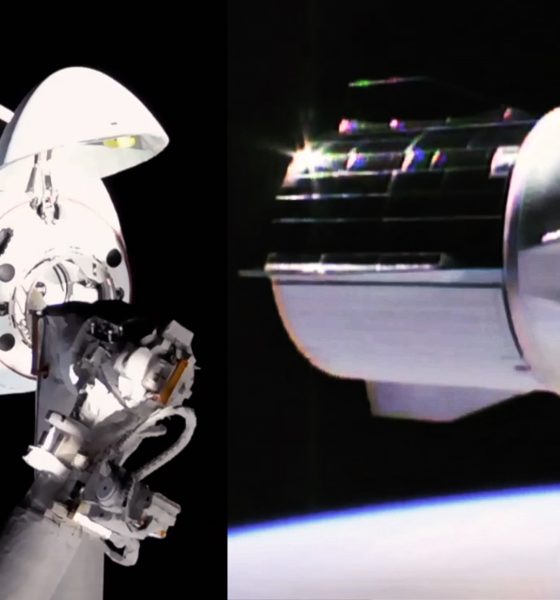
SpaceX
SpaceX’s Crew Dragon flawlessly docks with space station in spectacular orbital debut
Nearly half a decade and millions of hours of work have finally paid off after SpaceX’s Crew Dragon pulled off a flawless orbital debut, launching atop the first crew-rated Falcon 9 and docking with the International Space Station (ISS) a little over 24 hours later.
For what CEO Elon Musk described as a spacecraft with barely a part shared with the company’s already operational Cargo Dragon, such an unremarkable (in terms of surprises) launch debut is a massive achievement that speaks directly to the success of the NASA-SpaceX partnership and the exhaustive design, testing, and optimization directed at Crew Dragon. Having now completed two major trials – launch and docking – for DM-1, the spacecraft’s third and final hurdle will occur on March 8th when it attempts to safely return to Earth.
SpaceX team in Hawthorne control, Dragon docked to Station above pic.twitter.com/JUWkOrWjsH
— Elon Musk (@elonmusk) March 3, 2019
Beginning around 3:30 am and lasting til 10:45 am EST (08:30-15:45 UTC), SpaceX and NASA employees hosted live coverage of Crew Dragon’s inaugural visit to the International Space Station (ISS), a process that included multiple demonstrations of the spacecraft’s ability to approach, halt, and reverse. Almost ten minutes ahead of schedule, Crew Dragon successfully docked with the ISS in a first for SpaceX, having previously only conducted berthings with its Cargo Dragon vehicle.
- From render…
- to reality. (SpaceX/NASA)
Having also debuted a previously untested docking adapter (the International Docking Adapter, IDA), the Station’s three astronauts worked to open Dragon’s hatch, a task which they completed an hour or two after “capture”. This was rapidly followed by the astronauts entering SpaceX’s Crew Dragon, another historic first for the crew-rated spacecraft. They were greeted by Ripley (also known as Starwoman) and what Anne McClain described as small Earth, the stuffed globe that was included partially as a joke and a “super high tech zero-g indicator” according to Musk. After determining that Crew Dragon’s atmosphere was non-toxic, the astronauts removed breathing masks and returned to the capsule’s interior to formally welcome it to the ISS as the world’s newest orbital spacecraft, as well as the first commercially-developed vehicle meant to carry humans into orbit.
The dawn of a new era in human spaceflight pic.twitter.com/BHsfg1zYLN
— COL Anne McClain (@AstroAnnimal) March 3, 2019
While it may be unintuitive, the two dozen or so relatively slow and quiet hours that followed Crew Dragon’s launch were and remain far more important, and the spacecraft’s flawless on-orbit performance has thus far retired a huge number of concerns front and center for the first true launch of any spacecraft, let alone one designed specifically to carry astronauts and keep them safe. Thus far, Crew Dragon has done exactly that, approaching the ISS and docking with nary a hiccup, as if the rendezvous was the umpteenth and nothing out of the ordinary.
Technical achievements aside, the live coverage of Crew Dragon’s patient approach was perhaps some of the most spectacular and emotionally compelling content yet provided by SpaceX and NASA. At one point, as orbital sunset neared, a NASA ground controller requested that the spacecraft’s onboard spotlight be enabled to continue the docking approach, to which the SpaceX engineer hosting the webcast remarked on just how incredible and surreal it was to watch Crew Dragon methodically approach the station from less than 100 feet away. In fact, he had apparently spent “months” with that very same LED spotlight array on his desk, working to build, qualify, and test it to ensure that the light system was ready for spaceflight, just one of hundreds or thousands of seemingly minute details that one or several employees spent major portions of their lives working on.
- A live view of the ISS from cameras aboard Crew Dragon. (NASA/SpaceX)
- (NASA)
- (NASA)
- A better view of the solar array half of Crew Dragon’s trunk section. (NASA)
- (NASA)
- (NASA)
Come launch and on-orbit operations, SpaceX and NASA employees across the US hung on this mission’s every step with a singular nervousness, focus, and pride that easily beat even the buzz that surrounded Falcon Heavy’s iconic launch debut. Humanity as a whole may have paid significantly less attention to Crew Dragon’s launch debut, but almost every SpaceX employee appeared readily cognizant of the fact that this mission symbolized something radically more important and more fundamental to the company. Founded to ultimately help humanity take permanent steps beyond Earth orbit, Crew Dragon’s thus far flawless debut brings SpaceX as close as its ever been to shouldering the heavy responsibility of launching humans into space, be they NASA astronauts, paying tourists, or Martian hopefuls.
If all continues to proceed apace, DM-1 will conclude with Crew Dragon’s first orbital-velocity reentry on March 8th. Pending that capsules refurbishment and an equally bug-free in-flight abort test NET April to June, SpaceX and NASA could conduct the first crewed launch of Crew Dragon less than six months from now in July 2019. Much work lies ahead and delays are undeniably possible (if not probably), but – as they say – so far, so good.
Check out Teslarati’s newsletters for prompt updates, on-the-ground perspectives, and unique glimpses of SpaceX’s rocket launch and recovery processes!

Elon Musk
Elon Musk gives nod to SpaceX’s massive, previously impossible feat
It was the booster’s 30th flight, a scenario that seemed impossible before SpaceX became a dominant force in spaceflight.

Elon Musk gave a nod to one of SpaceX’s most underrated feats today. Following the successful launch of the Transporter-15 mission, SpaceX seamlessly landed another Falcon 9 booster on a droneship in the middle of the ocean.
It was the booster’s 30th flight, a scenario that seemed impossible before SpaceX became a dominant force in spaceflight.
Elon Musk celebrates a veteran Falcon 9 booster’s feat
SpaceX completed another major milestone for its Smallsat Rideshare program on Friday, successfully launching and deploying 140 spacecraft aboard a Falcon 9 from Vandenberg Space Force Base. The mission, known as Transporter-15, lifted off two days later than planned after a scrub attributed to a ground systems issue, according to SpaceFlight Now. SpaceX confirmed that all payloads designed to separate from the rocket were deployed as planned.
The Falcon 9 used for this flight was booster B1071, one of SpaceX’s most heavily flown rockets. With its 30th mission completed, it becomes the second booster in SpaceX’s fleet to reach that milestone. B1071’s manifest includes five National Reconnaissance Office missions, NASA’s SWOT satellite, and several previous rideshare deployments, among others. Elon Musk celebrated the milestone on X, writing “30 flights of the same rocket!” in his post.
Skeptics once dismissed reusability as unfeasible
While rocket landings are routine for SpaceX today, that was not always the case. Industry veterans previously questioned whether reusable rockets could ever achieve meaningful cost savings or operational reliability, often citing the Space Shuttle’s partial reusability as evidence of failure.
In 2016, Orbital ATK’s Ben Goldberg argued during a panel that even if rockets could be reusable, they do not make a lot of sense. He took issue with Elon Musk’s claims at the time, Ars Technica reported, particularly when the SpaceX founder stated that fuel costs account for just a fraction of launch costs.
Goldberg noted that at most, studies showed only a 30% cost reduction for low-Earth orbit missions by using a reusable rocket. “You’re not going to get 100-fold. These numbers aren’t going to change by an order of magnitude. They’re just not. That’s the state of where we are today,” he said.
Former NASA official Dan Dumbacher, who oversaw the Space Launch System, expressed similar doubts in 2014, implying that if NASA couldn’t make full reusability viable, private firms like SpaceX faced steep odds.
Elon Musk
SpaceX’s Starship program is already bouncing back from Booster 18 fiasco
Just over a week since Booster 18 met its untimely end, SpaceX is now busy stacking Booster 19, and at a very rapid pace, too.
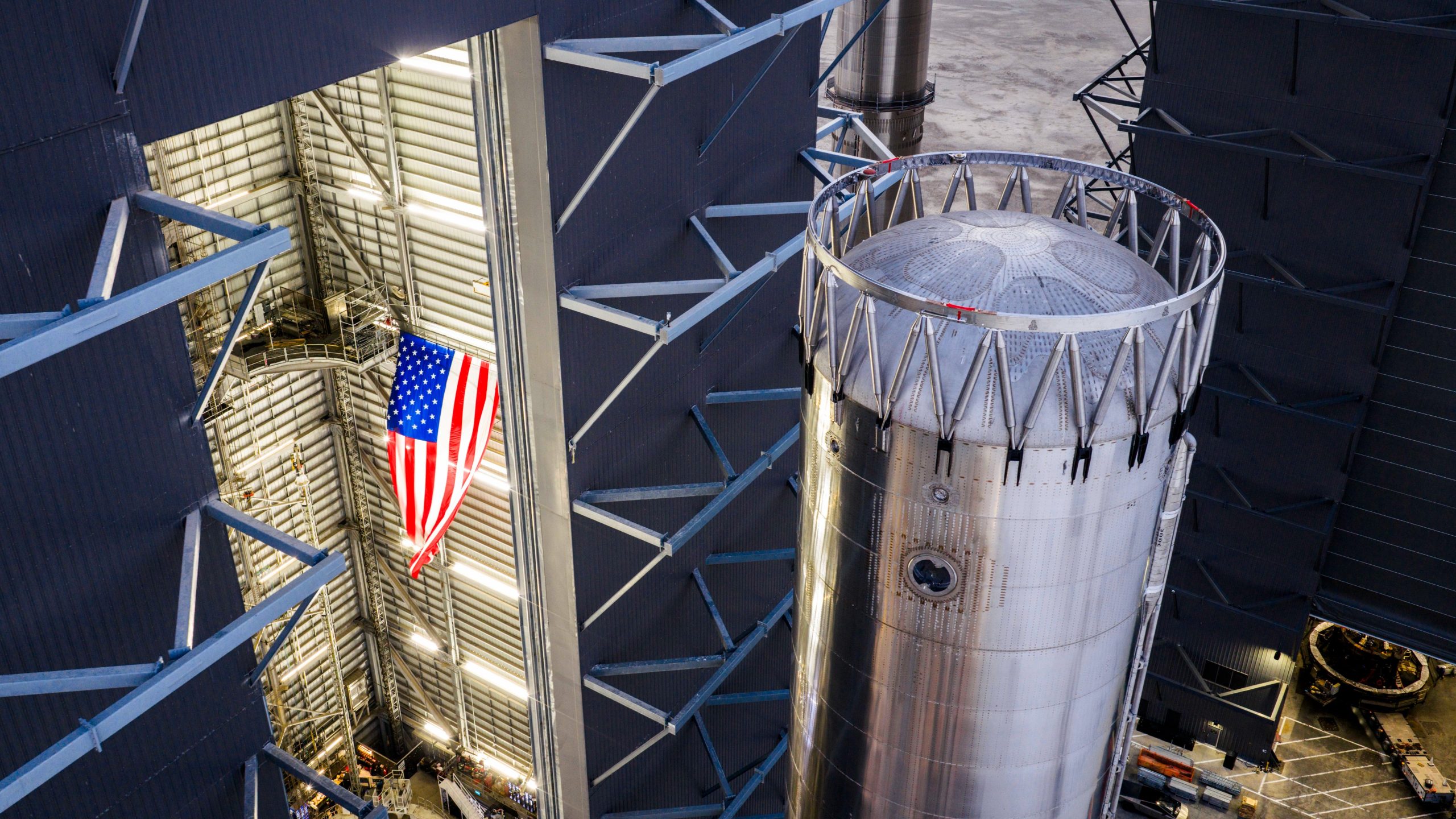
SpaceX is already bouncing back from the fiasco that it experienced during Starship Booster 18’s initial tests earlier this month.
Just over a week since Booster 18 met its untimely end, SpaceX is now busy stacking Booster 19, and at a very rapid pace, too.
Starship V3 Booster 19 is rising
As per Starbase watchers on X, SpaceX rolled out the fourth aft section of Booster 19 to Starbase’s MegaBay this weekend, stacking it to reach 15 rings tall with just a few sections remaining. This marks the fastest booster assembly to date at four sections in five days. This is quite impressive, and it bodes well for SpaceX’s Starship V3 program, which is expected to be a notable step up from the V2 program, which was retired after a flawless Flight 11.
Starship watcher TankWatchers noted the tempo on X, stating, “During the night the A4 section of Booster 19 rolled out to the MegaBay. With 4 sections in just 5 days, this is shaping up to be the fastest booster stack ever.” Fellow Starbase watcher TestFlight echoed the same sentiments. “Booster 19 is now 15 rings tall, with 3 aft sections remaining!” the space enthusiast wrote.
Aggressive targets despite Booster 18 fiasco
SpaceX’s V3 program encountered a speed bump earlier this month when Booster 18, just one day after rolling out into the factory, experienced a major anomaly during gas system pressure testing at SpaceX’s Massey facility in Starbase, Texas. While no propellant was loaded, no engines were installed, and no one was injured in the incident, the unexpected end of Booster 18 sparked speculation that the Starship V3 program could face delays.
Despite the Booster 18 fiasco, however, SpaceX announced that “Starship’s twelfth flight test remains targeted for the first quarter of 2026.” Elon Musk shared a similar timeline on X earlier this year, with the CEO stating that “ V3 is a massive upgrade from the current V2 and should be through production and testing by end of year, with heavy flight activity next year.”
Considering that Booster 19 seems to be moving through its production phases quickly, perhaps SpaceX’s Q1 2026 target for Flight 12 might indeed be more than feasible.
Elon Musk
Elon Musk shares SpaceX’s directive that destroys a prevalent media narrative
Musk’s comments followed Starlink’s initiatives for people affected by severe flooding in Indonesia and Cyclone Ditwah in Sri Lanka.

Elon Musk recently shared SpaceX’s standing policy to offer free Starlink service during natural disasters worldwide, highlighting the company’s commitment to pursue aid over profit during times of need.
Musk’s comments followed Starlink’s initiatives for people affected by severe flooding in Indonesia and Cyclone Ditwah in Sri Lanka.
Starlink activates free service in Indonesia and Sri Lanka
Starlink recently announced free service for those impacted by severe flooding in Indonesia’s Sumatra region, partnering with the government to deploy terminals rapidly to the hardest-hit areas. The offer extends to new and existing customers through December, restoring connectivity in zones where traditional networks have failed due to infrastructure damage.
Musk quoted the post on X, writing, “SpaceX standard policy is to make Starlink free whenever there is a natural disaster somewhere in the world. It would not be right to profit from misfortune.”
Starlink extended the same relief to Sri Lanka amid Cyclone Ditwah, coordinating with local authorities for additional support. The cyclone battered the island nation with heavy rains and winds, disrupting communications for thousands. Free access also lasts until year-end, emphasizing Starlink’s role in bridging gaps during crises.
“For those affected by the severe flooding in Indonesia and Sri Lanka in the aftermath of Cyclone Ditwah, Starlink is providing free service to new and existing customers through the end of December 2025. We’re also working with the Indonesian government to rapidly deploy terminals and restore connectivity to the hardest-hit areas on Sumatra, as well as with the Sri Lankan government to provide additional assistance,” Starlink wrote in a post on its official website.
Musk’s companies routinely provide aid
Musk’s firms have a track record of providing critical support in crises, often without fanfare, challenging portrayals of him as a comic book villain intent on enriching himself on the backs of a suffering populace. In January 2024 alone, Tesla opened Superchargers for free in Japan’s Hokuriku region after a magnitude 7.6 earthquake killed at least 55 and injured hundreds.
Similar efforts include Starlink deployments for the 2023 Maui wildfires, 2024 Hurricane Helene in North Carolina, and floods in Texas, where the service was used to help facilitate emergency coordination. These actions, which total millions in waived fees and logistics, demonstrate a proactive ethos among Musk’s companies, with Musk noting in past interviews that such aid stems from engineering solutions over optics.
The initiatives also provide a direct rebuttal of Musk’s characterization on mainstream media, which tends to lean negatively. This has become much more notable in recent years as Musk adopted more conservative policies. These negative sentiments came to a head earlier this year when Tesla stores, vehicles, and even some owners, were attacked during waves of anti-Tesla protests.
